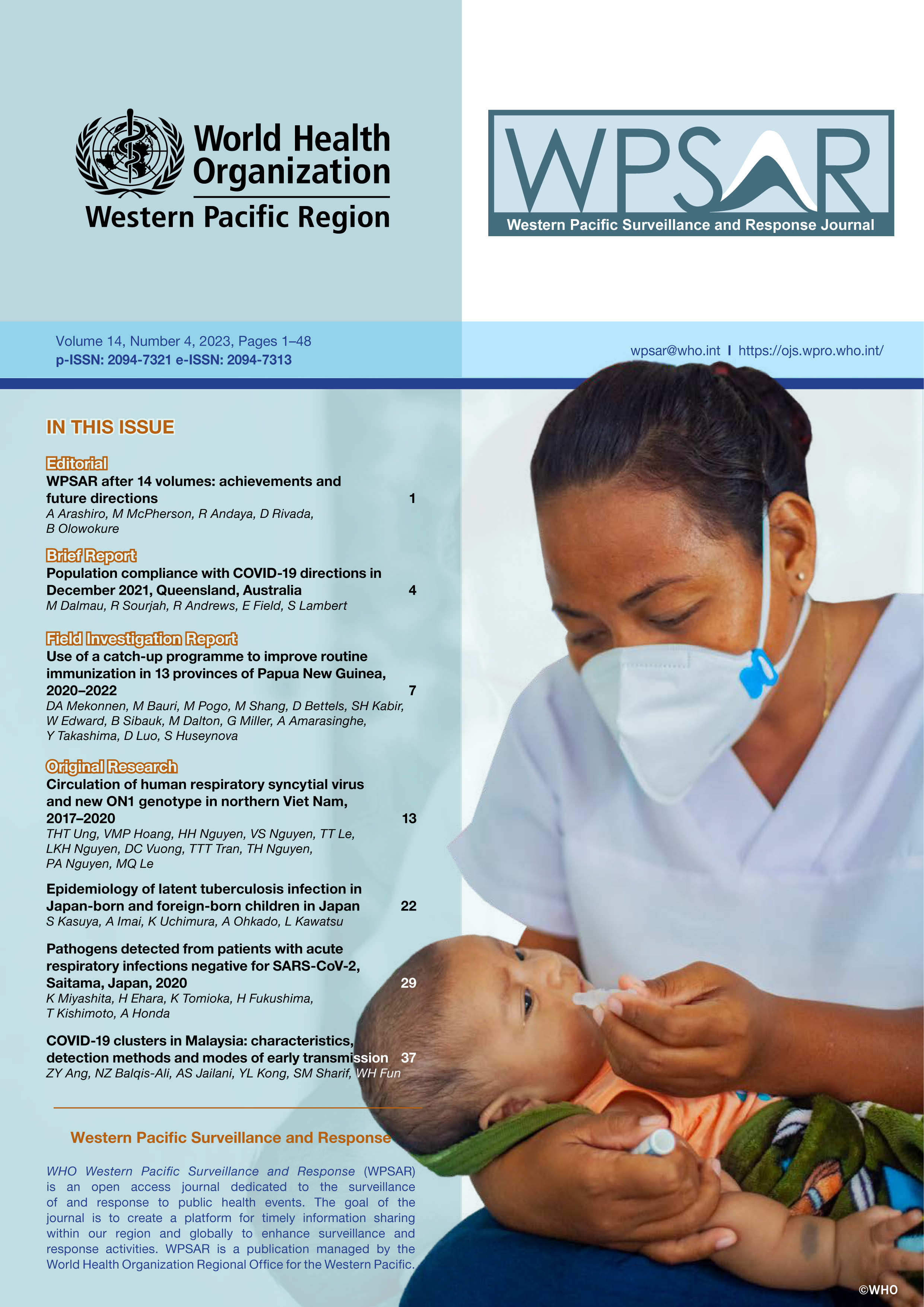Circulation of human respiratory syncytial virus and new ON1 genotype in northern Viet Nam, 2017–2020
DOI:
https://doi.org/10.5365/wpsar.2023.14.4.990Keywords:
human respiratory syncytial virus, genotype, sequence analysis, phylogenetic analysis, prevalence, next-generation sequencing, VietnamAbstract
Objective: Human respiratory syncytial virus (RSV) is a primary cause of paediatric severe acute respiratory infection (SARI) worldwide, especially in developing countries. We investigated the genetic characteristics of RSV in northern Viet Nam to determine the prevalence and distribution of subtypes as well as the diversity and transmission patterns of genotypes.
Methods: In two facilities, from January 2017 to December 2020, 1563 clinical specimens were collected from paediatric patients hospitalized with SARI and tested for RSV. Selected positive samples underwent sequencing analysis targeting the second hypervariable region of the G gene using next-generation sequencing.
Results: The RSV positivity rate was 28.02% (438/1563 samples), and prevalence was highest in children aged <1 year (43.84%; 192/438). Subtype RSV-A accounted for 53.42% (234/438) of cases, RSV-B for 45.89% (201/438), and there was coinfection in 0.68% (3/438). Both subtypes cocirculated and peaked during August–September in each year of the study. Phylogenetic analysis showed that RSV-A samples belonged to the ON1 genotype, which has three subgenotypes: ON1.1, ON1.2 and ON1.3. However, we did not find the 72-nucleotide duplication in the second hypervariable region of the G gene, a characteristic of genotype ON1, in any RSV-A samples. RSV-B samples belonged to genotype BA9.
Discussion: Our results provide additional molecular characterization of RSV infections in Viet Nam. Specially, our study is the first to report the absence of the 72-nucleotide duplication in the G gene of RSV-A genotype ON1 in Viet Nam, which may help in understanding the genetic evolution of RSV and be useful for vaccine development in the future.

